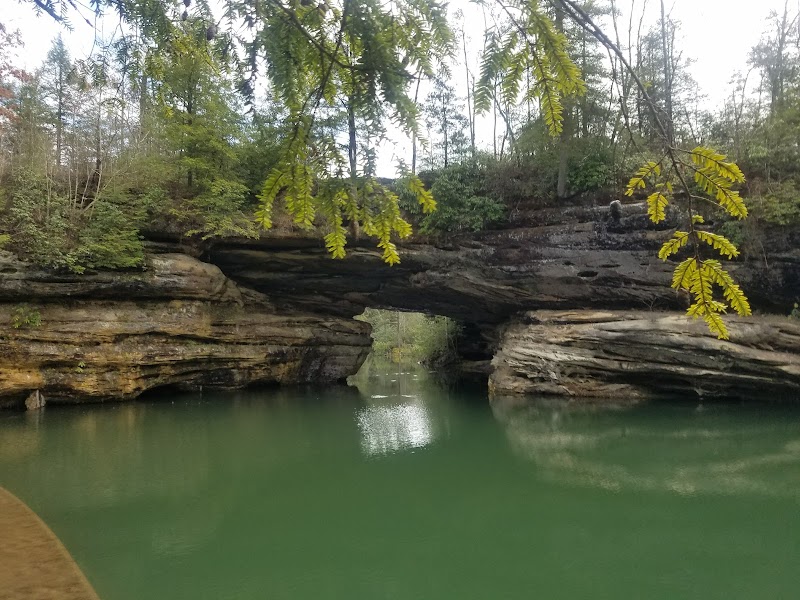
Pickett State Park Adventures
Pickett State Park offers rugged outdoor adventure on the edge of Kentucky and Tennessee, known for its scenic sandstone bluffs, cascading waterfalls, and extensive trail system within the scenic Cumberland Plateau.
About Pickett State Park

Pickett State Park, located in Fentress County, Tennessee, is a 1,200-acre park nestled at the western edge of the rugged Cumberland Plateau. Adjacent to the expansive Pickett State Forest, the park features dramatic sandstone bluffs, deep gorges, pristine streams, and striking waterfalls, creating a haven for outdoor enthusiasts and nature lovers. The park's diverse landscape supports a rich ecology including mixed hardwood forests, hemlocks, and native wildflowers, alongside wildlife such as white-tailed deer, wild turkeys, and numerous songbirds. The park serves as a key gateway to the Pickett State Forest’s nearly 20,000 acres, offering outstanding opportunities for hiking, mountain biking, horseback riding, rock climbing, and fishing. Historically, the area was developed in the 1930s by the Civilian Conservation Corps (CCC), whose legacy remains visible in stone park structures, shelters, and the network of trails and roads. Popular landmarks include the Castor Bridge Overlook, the Silers Bald Loop, and Pickett’s scenic waterfall trails. Visitors appreciate the quiet, remote feel combined with well-maintained facilities including campgrounds, picnic areas, and a visitor center. The park’s blend of natural beauty, historic features, and variety of outdoor recreation draw visitors year-round, providing a perfect balance of challenge and relaxation on Tennessee’s rugged plateau.
Highlights
Dramatic sandstone cliffs and overlooks such as Castor Bridge
Numerous cascading waterfalls including Big Rocky Gorge Falls
Extensive trail network connecting park and Pickett State Forest
Historic Civilian Conservation Corps structures and stone shelters
Notable Natural Features
Castor Bridge Overlook
A sandstone bridge-shaped natural rock formation offering panoramic views of scenic valley and forested cliffs.
Big Rocky Gorge
A deep, rugged gorge with a cascading waterfall ideal for hikers seeking breathtaking scenery.
Civilian Conservation Corps (CCC) Era Structures
Stone shelters, walls, and trails built in the 1930s exemplifying early park development and rustic architecture.
